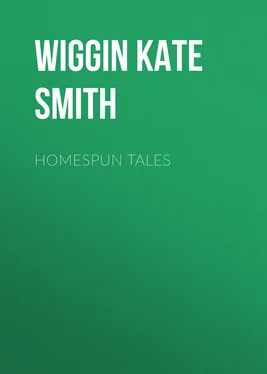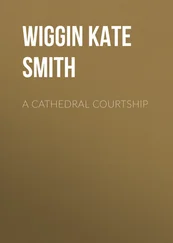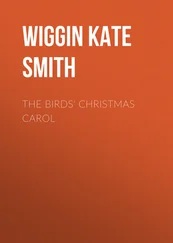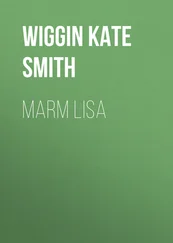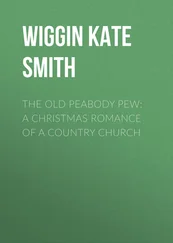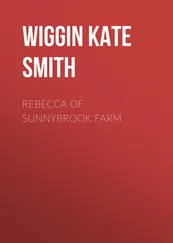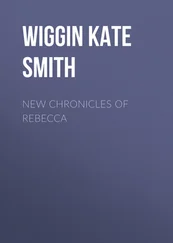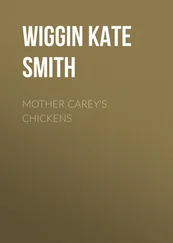Kate Wiggin - Homespun Tales
Здесь есть возможность читать онлайн «Kate Wiggin - Homespun Tales» — ознакомительный отрывок электронной книги совершенно бесплатно, а после прочтения отрывка купить полную версию. В некоторых случаях можно слушать аудио, скачать через торрент в формате fb2 и присутствует краткое содержание. Жанр: foreign_prose, foreign_antique, на английском языке. Описание произведения, (предисловие) а так же отзывы посетителей доступны на портале библиотеки ЛибКат.
- Название:Homespun Tales
- Автор:
- Жанр:
- Год:неизвестен
- ISBN:нет данных
- Рейтинг книги:3 / 5. Голосов: 1
-
Избранное:Добавить в избранное
- Отзывы:
-
Ваша оценка:
- 60
- 1
- 2
- 3
- 4
- 5
Homespun Tales: краткое содержание, описание и аннотация
Предлагаем к чтению аннотацию, описание, краткое содержание или предисловие (зависит от того, что написал сам автор книги «Homespun Tales»). Если вы не нашли необходимую информацию о книге — напишите в комментариях, мы постараемся отыскать её.
Homespun Tales — читать онлайн ознакомительный отрывок
Ниже представлен текст книги, разбитый по страницам. Система сохранения места последней прочитанной страницы, позволяет с удобством читать онлайн бесплатно книгу «Homespun Tales», без необходимости каждый раз заново искать на чём Вы остановились. Поставьте закладку, и сможете в любой момент перейти на страницу, на которой закончили чтение.
Интервал:
Закладка:
Kate Douglas Wiggin
Homespun Tales
Introduction
These three stories are now brought together under one cover because they have not quite outworn their welcome; but in their first estate two of them appeared as gift-books, with decorative borders and wide margins, a style not compatible with the stringent economies of the present moment. Luckily they belong together by reason of their background, which is an imaginary village, any village you choose, within the confines, or on the borders of York County, in the State of Maine.
In the first tale the river, not “Rose,” is the principal character; no one realizes this better than I. If an author spends her summers on the banks of Saco Water it fills the landscape. It flows from the White Mountains to the Atlantic in a tempestuous torrent, breaking here and there into glorious falls of amber glimpsed through snowy foam; its rapids dash through rocky cliffs crowned with pine trees, under which blue harebells and rosy columbines blossom in gay profusion. There is the glint of the mirror-like lake above the falls, and the sound of the surging floods below; the witchery of feathery elms reflected in its clear surfaces, and the enchantment of the full moon on its golden torrents, never twice alike and always beautiful! How is one to forget, evade, scorn, belittle it, by leaving its charms untold; and who could keep such a river out of a book? It has flowed through many of mine and the last sound I expect to hear in life will be the faint, far-away murmur of Saco Water!
The old Tory Hill Meeting House bulks its way into the foreground of the next story, and the old Peabody Pew (which never existed) has somehow assumed a quasi-historical aspect never intended by its author. There is a Dorcas Society, and there is a meeting house; my dedication assures the reader of these indubitable facts; and the Dorcas Society, in a season of temporary bankruptcy, succeeding a too ample generosity, did scrub the pews when there was no money for paint. Rumors of our strenuous, and somewhat unique, activities spread through our parish to many others, traveling so far (even over seas) that we became embarrassed at our easily won fame. The book was read and people occasionally came to church to see the old Peabody Pew, rather resenting the information that there had never been any Peabodys in the parish and, therefore, there could be no Peabody Pew. Matters became worse when I made, very reverently, what I suppose must be called a dramatic version of the book, which we have played for several summers in the old meeting house to audiences far exceeding our seating capacity. Inasmuch as the imaginary love-tale of my so-called Nancy Wentworth and Justin Peabody had begun under the shadow of the church steeple, and after the ten years of parting the happy reunion had come to them in the selfsame place, it was possible to present their story simply and directly, without offense, in a church building. There was no curtain, no stage, no scenery, no theatricalism. The pulpit was moved back, and four young pine trees were placed in front of it for supposed Christmas decoration. The pulpit platform, and the “wing pews” left vacant for the village players, took the place of a stage; the two aisles served for exits and entrances; and the sexton with three rings of the church bell, announced the scenes. The Carpet Committee of the Dorcas Society furnished the exposition of the first act, while sewing the last breadths of the new, hardly-bought ingrain carpet. The scrubbing of the pews ends the act, with dialogue concerning men, women, ministers, church-members and their ways, including the utter failure of Justin Peabody, Nancy’s hero, to make a living anywhere, even in the West. The Dorcas members leave the church for their Saturday night suppers of beans and brown bread, but Nancy returns with her lantern at nightfall to tack down the carpet in the old Peabody pew and iron out the tattered, dog’s eared leaves of the hymn-book from which she has so often sung “By cool Siloam’s shady rill” with her lover in days gone by. He, still a failure, having waited for years for his luck to turn, has come back to spend Christmas in the home of his boyhood; and seeing a dim light in the church, he enters quietly and surprises Nancy at her task of carpeting the Peabody Pew, so that it shall look as well as the others at next day’s services. The rest is easy to imagine. One can deny the reality of a book, but when two or three thousand people have beheld Justin Peabody and Nancy Wentworth in the flesh, and have seen the paint of the old Peabody Pew wiped with a damp cloth, its cushion darned and its carpet tacked in place, it is useless to argue; any more than it would be to deny the validity of the egg of Columbus or the apple of William Tell.
As for “Susanna and Sue” the story would never have been written had I not as a child and girl been driven once a year to the Shaker meeting at the little village of Alfred, sixteen miles distant. The services were then open to the public, but eventually permission to attend them was withdrawn, because of the careless and sometimes irreverent behavior of young people who regarded the Shaker costumes, the solemn dances or marches, the rhythmic movements of the hands, the almost hypnotic crescendo of the singing, as a sort of humorous spectacle. I learned to know the brethren and sisters, and the Elder, as years went by, and often went to the main house to spend a day or two as the guest of Eldress Harriet, a saint, if ever there was one, or, later, with dear Sister Lucinda.
The shining cleanliness and order, the frugality and industry, the serenity and peace of these people, who had resigned the world and “life on the plane of Adam,” vowing themselves to celibacy, to public confession of sins, and the holding of goods in common,—all this has always had a certain exquisite and helpful influence upon my thought, and Mr. W. D. Howells paid a far more beautiful tribute to them in “The Undiscovered Country.”
It is needless to say that I read every word of the book to my Shaker friends before it was published. They took a deep interest in it, evincing keen delight in my rather facetious but wholly imaginary portrait of “Brother Ansel,” a “born Shaker,” and sadly confessing that my two young lovers, “Hetty” and “Nathan,” who could not endure the rigors of the Shaker faith and fled together in the night to marry and join the world’s people,—that this tragedy had often occurred in their community.
Here, then, are the three simple homespun tales. I believe they are true to life as I see it. I only wish my readers might hear the ripple of the Maine river running through them; breathe the fragrance of New England for-ests, and though never for a moment getting, through my poor pen, the atmosphere of Maine’s rugged cliffs and the tang of her salt sea air, they might at least believe for an instant that they had found a modest Mayflower in her pine woods.
KATE DOUGLAS WIGGIN. July, 1920.
ROSE O’ THE RIVER
I. The Pine And the Rose
It was not long after sunrise, and Stephen Waterman, fresh from his dip in the river, had scrambled up the hillside from the hut in the alder-bushes where he had made his morning toilet.
An early ablution of this sort was not the custom of the farmers along the banks of the Saco, but the Waterman house was hardly a stone’s throw from the water, and there was a clear, deep swimming-hole in the Willow Cove that would have tempted the busiest man, or the least cleanly, in York County. Then, too, Stephen was a child of the river, born, reared, schooled on its very brink, never happy unless he were on it, or in it, or beside it, or at least within sight or sound of it.
Читать дальшеИнтервал:
Закладка:
Похожие книги на «Homespun Tales»
Представляем Вашему вниманию похожие книги на «Homespun Tales» списком для выбора. Мы отобрали схожую по названию и смыслу литературу в надежде предоставить читателям больше вариантов отыскать новые, интересные, ещё непрочитанные произведения.
Обсуждение, отзывы о книге «Homespun Tales» и просто собственные мнения читателей. Оставьте ваши комментарии, напишите, что Вы думаете о произведении, его смысле или главных героях. Укажите что конкретно понравилось, а что нет, и почему Вы так считаете.
